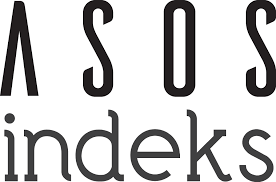Indexes We Scan








Volume: 2 Issue: 3 - 2022
| 1. | Cover Page I |
| 2. | Contents Page II |
| ORIGINAL RESEARCH | |
| 3. | Child Prosociality Scale: Child Form Validity and Reliability Study Samet Ata, İsmihan Artan doi: 10.5505/sec.2022.54154 Pages 1 - 14 INTRODUCTION: It is known that prosocial behaviors have an essential place in development and communication. For this reason, if it is understood why and when prosocial behavior occurs or does not occur, interventions can be made to increase the behaviors that are beneficial in order to increase the social welfare of society. In this context, the development of a prosocial behavior scale for primary school children in order to directly measure the prosocial skills of children and the acquisition of this scale in the field shows the importance of the study. When evaluated in this context, the aim of the study is to develop a measurement tool that can collect data directly from children in the relevant literature. METHODS: The population of the research consists of primary school children studying in the 2nd, 3rd, and 4th grades. For the development of the scale, 145 people from 2nd, 3rd, and 4th-grade children studying in primary schools participated in the pilot study and 837 people participated in the development of the scale. Exploratory and Confirmatory Factor Analyzes were conducted to develop the scale within the scope of the study. The reliability of the study was completed by examining the Cronbach Alpha and McDonalds Omega coefficients, and the validity and reliability studies of the scale were completed. RESULTS: The scale developed within the scope of the study consists of 20 items and three sub-dimensions: Help, Sharing, and Empathy. The scale was designed in a 4-point Likert type. Since the second level factor analysis is performed, both the total score can be obtained from the scale and the sub-dimensions can be used as separate scales. A high score on the scale means high prosociality. When the scale is examined, it is seen that McDonald's Omega coefficient varies between.583 and.817, and Cronbach's Alpha varies between.574 and.811. DISCUSSION AND CONCLUSION: The item factor loads and the reliability of the scale were obtained at the desired level. The high scores obtained from the scale indicate that the prosocial levels of the children are high. It is appropriate to apply the scale to 2nd, 3rd, and 4th-grade children. |
| 4. | 2022 Advisory and Arbitration Board Pages E1 - E2 Abstract | |



